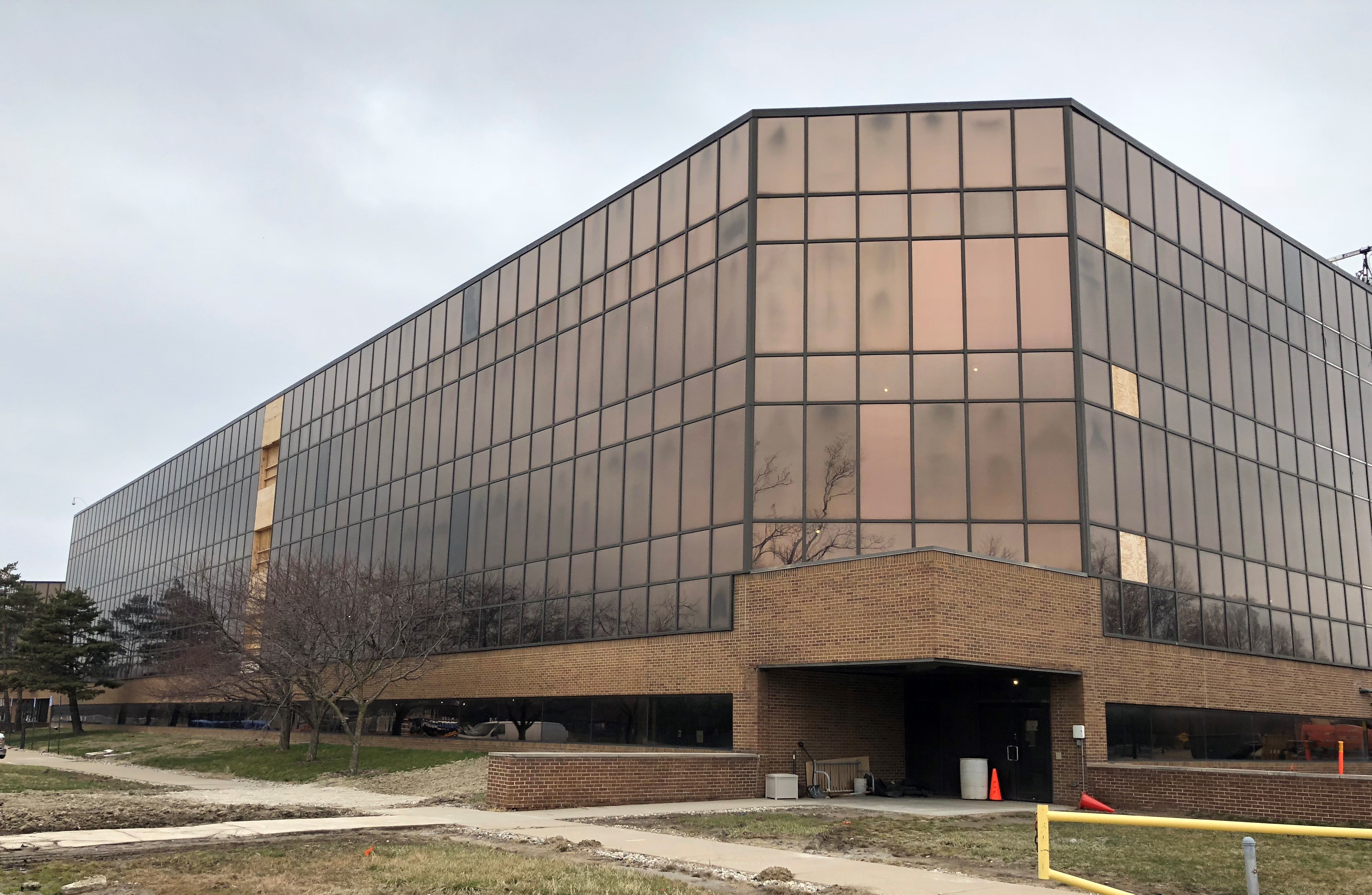Insulated glazing panels, also known as glazing inserts, laminated insulated metal panels, glazing infill panels, spandrel panels and insulated aluminum composite panels, are most-commonly installed in standard curtainwall or extruded mullion systems and replace glass units. They are an integral part of commercial building projects and a popular material used in storefronts and educational facilities.
An integral part of commercial building projects and a popular storefront material

After: Ford Rotunda Center in Dearborn, Mich.
Insulated glazing panels are constructed with an insulating foam core sandwiched between two stabilizers and finished metal sheets. Panels are available in thicknesses starting at 3/4-inch and can range up to 6 inches in overall thickness with 1-inch nominal thickness being most common for curtainwall and storefront applications. Typical insulated glazing panels are comprised of expanded polystyrene (EPS), extruded closed-cell foam, or a polyisocyanurate (ISO) insulated core. While panels constructed with ISO are typically at a higher price point, they provide increased R-value, have self-extinguishing properties and do not produce toxic fumes, making them a preferred option in school applications.
Stabilizers
Various stabilizers such as corrugated thermoplastic, solid thermoplastic and hardboard are also used in insulated glazing panels. Hardboard stabilizers are a lower-cost alternative but should be used only in certain applications as they are not water resistant. Insulated glazing panels are a reliable and decorative solution for architects and building owners looking for a replacement to glass or as a means to complement glass in curtainwalls and storefront extruded mullion systems.
While the weight of different insulated glazing panels varies based on the panel construction, the panels are lightweight compared to glass, easy to handle and install quickly. Insulated glazing panels are most often ordered factory-cut to the specific sizes required for the project so that they can be field glazed, however, flat stock panels or panel blanks can be ordered and cut on-site using standard carpentry tools.
The most common sizes of insulated glazing panel blanks are 4 by 8 feet, 4 by 10 feet and 4 by 12 feet, although depending on the color selection and panel construction, 5-inch-wide panels may also be an option. In addition to the standard panel manufactured in a fixed, consistent thickness across the plane of the panel, fabricated options are also available to provide additional R-value, customization of the reveal created between the panel face and the face of the mullion, and wrapped edges that create hairline joints between panels in structural butt-glazed applications.
A stepped-edge insulated glazing panel provides new aesthetics with the ability to adjust the reveal created between the face of the mullion and the face of the panel. Stepped-edge insulated glazing panels can create a flat, monolithic appearance where the face of the panel is flush with the face of the mullions. Various options are available, including two to four stepped edges, which can fit into a 1-inch to 2 1/2-inch glazing pocket.
A wrapped-edge insulated glazing panel consists of a foam plastic core bonded on both sides to thermoplastic stabilizers with finished sheets of aluminum on each face that encapsulate the edges to allow for metal-to-metal hairline joints in structural butt-glazed applications. Wrapped-edge panels can be used in applications where the opening in the curtainwall system exceeds the maximum panel size, allowing panels to be installed next to each other. Depending on the project requirements, panels can be manufactured with one to four wrapped panel edges.
A rabbet-edge insulated glazing panel is designed to provide maximum insulation on the interior face of the panel. Rabbet-edge panels are typically available in a 7- or 8-ply panel and can increase R-value by as much as 100 to 200% over standard 1-inch insulated glazing panels. The additional layers in a rabbet-edge insulated glazing panel are added to the interior side of the panel and live in the interior side of the curtainwall or mullion system. The net result is an increase in R-value with no impact on the exterior aesthetic. Aside from the highly decorative features insulated glazing panels provide, they deliver a long-lasting, durable surface with excellent insulating properties.
As seen in the before-and-after photos, the insulated glazing panels completely transformed the Ford Rotunda Center in Dearborn, Mich., into a modern building with a high-tech look. By replacing a certain portion of the existing glass with insulated glazing panels, the company was able to recognize energy savings with the increased R-value the panels provided over glass. With building and energy efficiency codes becoming even more stringent, insulated glazing panels can be a smart solution for any project.
Shawn Crouthamel is national sales manager at Laminators Inc., Hatfield, Pa. To learn more, call (800) 523-2347, email shawn.crouthamel@laminatorsinc.com or visit www.laminatorsinc.com.

Before: Ford Rotunda Center in Dearborn, Mich.






